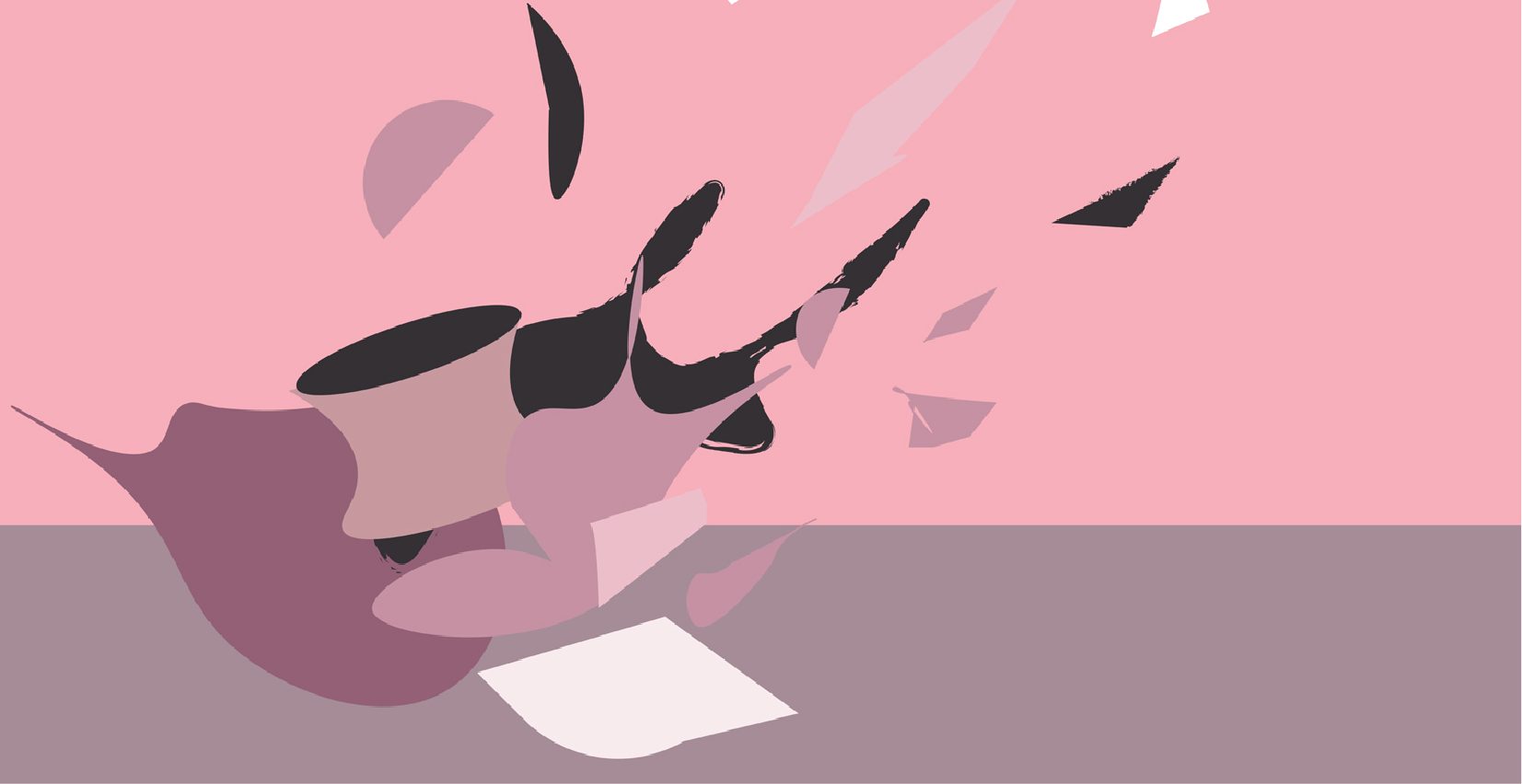
What do we think when a child destroys the block tower they have just created? Does this opinion change when the creation is someone else’s? What if – instead – the tower was a 2000-year-old vas? Would we call this art? The boundary at which our negative connotations of destruction turn into admiration of conceptual art is being pushed and toyed by artists such as Banksy, Rauschenberg and Weiwei.
Banksy self-destructed his piece, Girl With Balloon, posting the video under the caption “the urge to destroy is also a creative urge’. Art becomes performative when pushed into this destructive dimension; it no longer remains just a picture, but instead transforms into an event. The piece is no longer able to be seen in the flesh by the private bidder or gallery visitors, but is now only accessible through the video of the event – just like any social media post – everyone sees it in the same way. There are no special privileges or excludable access. This relates to the whole purpose of Banksy’s work the accessibility of art, whether it be on the street or online. At one auction for Banksy work, just as soon as the million-dollar bid was secured, the painting itself plunged through the bottom of the frame, being shredded to pieces in the process. To be bought at such prices and celebrated by art critics is the dream of many, yet Banksy robs the elite of claiming ownership to his art. Instead his work becomes a performance, it becomes the shock on the faces of the bidders and the rumours circulating over how someone could do such a thing to their own creation.
In the case of Rauschenberg, the erasure of the drawing by the celebrated artist de Kooning antagonises the viewer. In Erased de Kooning, we are left with a blank page with faint traces of what once was. The detail which we normally use for formal analysis has been stripped from the viewer. Yet when faced with these faint outlines, we are forced to consider what had been – not what could’ve been – in effect a reversal of the creative process that the artist faced. But plunged into this process we are forced to analyse what isn’t there. The urge to destroy isn’t just a creative urge on the part of the artist, but also for the viewer, who is placed in the artist’s shoes and becomes a part of the process. Unlike Banksy, this work hasn’t been completely destroyed – the blank page is left as an indication that this work isn’t just destruction but devotion to the wider creative process.
Banksy self-destructed, and Rauschenberg destroyed the work of a fellow artist, but what about the destruction of a 2000-year-old culturally significant antique? When Leo Steinberg asked Rauschenberg whether he would erase a Rembrandt painting, Rauschenberg replied no. This was interpreted by Steinberg as due to the fact that to do so would be to vandalise the creation by one of the greatest – instead of destroying the work of a living artist who consented to the process. Yet Ai Weiwei took a different stance in his Dropping a Han Dynasty Urn (1995). After having paid several thousand dollars for the ceremonial urn, from a period often considered as quintessential in Chinese history, Weiwei made a three-part photo series documenting him dropping the urn. Whereas with Rauschenberg and Banksy people were simply shocked, in this case people were genuinely offended and outraged at the destruction of a cultural heirloom. However, instead of being simply a reckless act, this destruction reflected the cultural revolution within China under Chairman Mao where the Four Olds (si jiu) – customs, culture, ideas, habits – were instructed to be destroyed. Instead of destruction being merely a creative urge, it was necessary in which to build a new creation. As the artist himself states “Chairman Mao used to tell us that we can only build a new world if we destroy the old one”. This piece leads us to question how we attach significance and value to inanimate objects and ultimately question the meaning of value itself.
Through examining these artists, we see that destruction is in fact a creative urge, changing art from a picture to an event and toying’s with the viewer’s imagination in ground-breaking ways. By destroying the picture, we no longer need to see the art work in order to analyse it, instead it is in our minds and stays with us to be accessible anytime we wish.
For Cherwell, maintaining editorial independence is vital. We are run entirely by and for students. To ensure independence, we receive no funding from the University and are reliant on obtaining other income, such as advertisements. Due to the current global situation, such sources are being limited significantly and we anticipate a tough time ahead – for us and fellow student journalists across the country.
So, if you can, please consider donating. We really appreciate any support you’re able to provide; it’ll all go towards helping with our running costs. Even if you can't support us monetarily, please consider sharing articles with friends, families, colleagues - it all helps!
Thank you!





